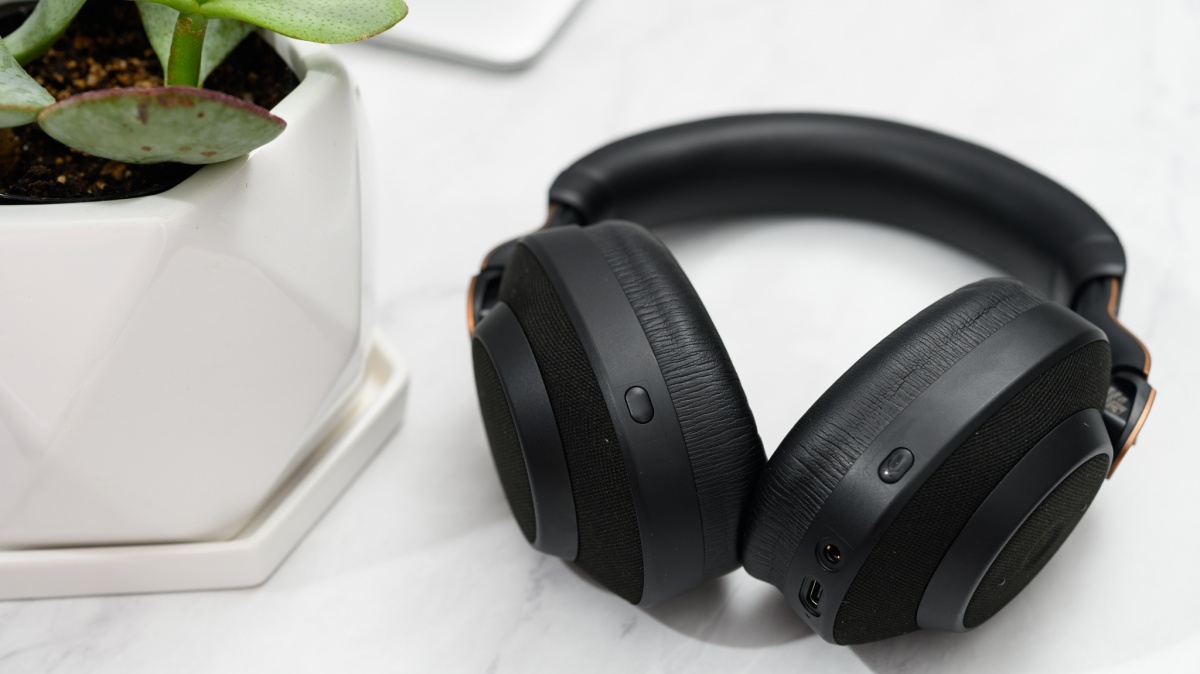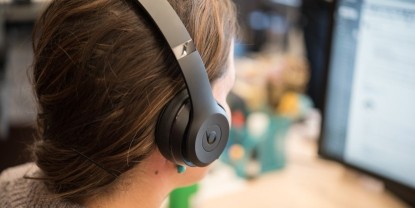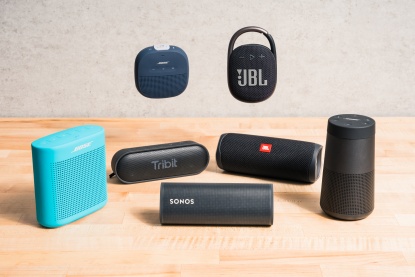Headphones can make working at home, working in a crowded office, travelling, commuting on public transit, and movie watching both more enjoyable and more productive. We tailored our testing metrics and the tests that constitute them to cover that wide range of potential uses.
Sound Quality
Sound quality, by its very definition, is a subjective subject. Different people have different tastes, and thus may find different sound profiles more or less enjoyable. Therefore, we consulted with audio engineers and professionals to work out an audio testing process that would be helpful to our readers. In the end we developed a side-by-side listening process that incorporates various genres of music. This allows us to directly compare every pair of headphones to one another with multiple, different sounding points of reference. We then grade how clearly (relative to one another) each pair articulates sound in the bass, mid and treble ranges, and which of these ranges (if any) recieve more emphasis than the others. We can in turn tailor our recommendations to specific types of listeners. Does thumpy bass keep you motivated? We can steer your to a warm sounding pair of headphones that brings the bass to the forefront. Eclectic taste in music? We can help you find headphones with an even articulation throughout that will result in a full-bodied sound, no matter the genre. Subsist on a steady diet of acoustic numbers and/or podcasts? We can suggest a pair that stays bright and clear through the mid and treble ranges and makes guitars and voices sparkle.
Noise Isolation/Cancellation
A big draw of headphones over earbuds is their ability to block out more of the outside world, which can both make your music sound better and make it easier to concentrate on the task at hand. For all of our noise isolation tests we turned active noise cancellation, if such a technology were available in the model we were testing, to full. We began with a controlled baseline test, sitting next to a whirring fan emitting 70 decibels of sound with no music playing in the headphones. This recreates the kind of consistent, low hum you'd find on planes and public transportation.
From there we took the headphones out into the real world having multiple testers assess the noise blocking prowess of each pair while working in crowded houses and open offices, travelling on planes, travelling on trains and subways, and while reading in crowded coffee shops. We amalgamated all of these controlled testing results and real-world testing opinions into our final noise isolation and noise cancellation scores.
Comfort
Comfort is a very personal thing, so we enlisted more than a dozen testers to wear each pair of headphones for more than 4 hours. This gave us a range of comfort opinions from people with different sized heads and ears. We also double checked these scores by directly comparing the fit of each pair one right after another.
User Friendliness
Most headphones have controls that allow you to adjust volume and skip tracks without taking your phone out of your pocket. Some even have apps that allow you to dive into specific settings and adjust things like EQ and noise cancellation levels. We used the same cadre of testers we used for comfort testing to complete a series of normal everyday tasks, along with some more advanced ones, with each pair. Those testers then reported how easy and intuitive they found using each pair, and any specific annoyances they encountered.
Portability
Most headphones fold up for easier transport. Many also come with carrying cases and pouches. We had our in-house mechanical engineers appraise the protective value of those cases, measured their comparative sizes, and assessed how easily we could pack each pair into our daily backpack and messenger bags and overstuffed carry-on luggage.









